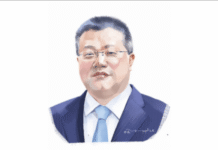
From a sustainability perspective, the global apparel industry changed quite markedly in 2019. This was the first year I can remember in which all parts of the industry—brands and their RMG suppliers—appeared to be singing from the same hymn sheet, all pulling in the same direction. The message was clear: time is running out to address climate and sustainability issues, and we must act now. We cannot kick the can down the road any longer.
There are a number of reasons why 2019 was so significant but here, I have identified five clear trends in the global apparel industry and associated supply chains which suggest people are now taking sustainability seriously.
Leadership
It has long been recognised that sustainability progress will only happen if industry leaders are on board, and in 2019, we saw plenty of evidence to suggest that leaders in the apparel industry are embracing sustainability. Every time CEOs from the likes of Kering, Levi Strauss, H&M and Inditex spoke to the media, the first thing they wanted to discuss was sustainability. These leaders were also instrumental in establishing and helping to drive forward a number of industry initiatives on issues such as recycling, carbon emissions and target setting in relation to the Sustainable Development Goals (SDGs).
The positive in all of this is that these leaders are not embracing sustainability because they feel they have to. Rather, the penny has now dropped for them that being sustainable actually makes good business sense. There is no other way. Those businesses that do not jump on board on this issue risk being left behind by their peers—and they know it.
Investment
During 2019, investors stepped onto the sustainability space in a significant way. More and more investors now see sustainable textiles as a realistic proposition and this capital influx is crucial for the industry, particularly the supply chains. To offer a couple of examples, technology company Spinnova recently received an investment of 11 million euros to support its tech which converts pulp into textile fibres without any harmful chemicals.
Meanwhile, Fashion for Good, which is backed by the C&A Foundation, launched a USD 60m fund to back new technologies and other initiatives aimed at tackling environmental and social issues in garment supply chains (where they are most needed). The Good Fashion Fund will invest in the implementation of technologies in supply chains such as ours in Bangladesh, focusing on R&D and innovative solutions where there is currently a lack of capital. This is brilliant news.
Going circular
Recycling is a major theme in the global apparel industry right now. However, up until 2019, there were a lot of great ideas and technology start-ups in this area, but not very much action. Last year, this changed, and we saw significant financial support heading into textile-to-textile recycling initiatives from the businesses such as Re:newcell and Infinited Fiber Company. Both these solutions are set to scale, both have brand partners, and both offer game-changing opportunities to help the apparel industry move from linear to circular.
Another textile recycling technology business, Evrnu, recently closed a USD 9m round of Series A funding. This company has already unveiled its first commercially available recycling technology, NuCycl, which converts old cotton garments into high-quality materials. The significance of all these breakthroughs could potentially be huge for Bangladesh’s RMG sector. But we have to be alive to the opportunities. How can our industry support textile-to-textile recycling at scale? How can it help brands meet their ambitions to “close the loop” in apparel? We need to be onboard, right at the front of the train for the recycling revolution.
Collaboration
We saw collaboration like never before in the global apparel industry during 2019. This was most evident in the launch of several initiatives which gathered high-profile support from brands and retailers as well as other industry stakeholders. What was striking about these initiatives was that they got business leaders which are normally competing to come around the same table to thrash out the most sustainable way forward for the apparel industry.
We know that the sustainability challenges facing the apparel industry are too broad and complex to be tackled in isolation. This will only lead to a lack of coordination and the wasteful duplication of efforts. Far better to have the industry as a whole working together to bring forward meaningful, scalable solutions which we can all get behind. It is time to put aside competitive differences, and it was heartening to see some of the world’s leading apparel brand bosses do just that in 2019. Supply chains in Bangladesh must surely follow suit.
Supply chains
Most apparel brands acknowledge that the vast majority of their climate impacts—around 90 percent—occur in supply chains. That’s because this is where the heavy-duty business of production takes place, from the water-intensive wet processing stage of garment manufacture to the dyeing and production process which uses large amounts of dyes, chemicals, water and energy.
2019 was the year in which many brands finally made solid commitments around their supply chains as regards supporting them in the shift towards renewable energy and other more sustainable methods of production. A number of brands have made public pledges on such issues and, although it is not entirely clear how they intend to make this transition at the moment—for example, who will pay for these upgrades?—it is encouraging that at least this issue is finally being publicly acknowledged.
For our own part in the Bangladesh RMG sector, there is a lot we can do to support brands in the switch to more sustainable methods of production. We need to recognise that moving to renewable energy and other steps can now offer us a unique selling point with our global customers.
Mostafiz Uddin is the Managing Director of Denim Expert Limited. He is also the Founder and CEO of Bangladesh Denim Expo and Bangladesh Apparel Exchange (BAE). Email: mostafiz@denimexpert.com









